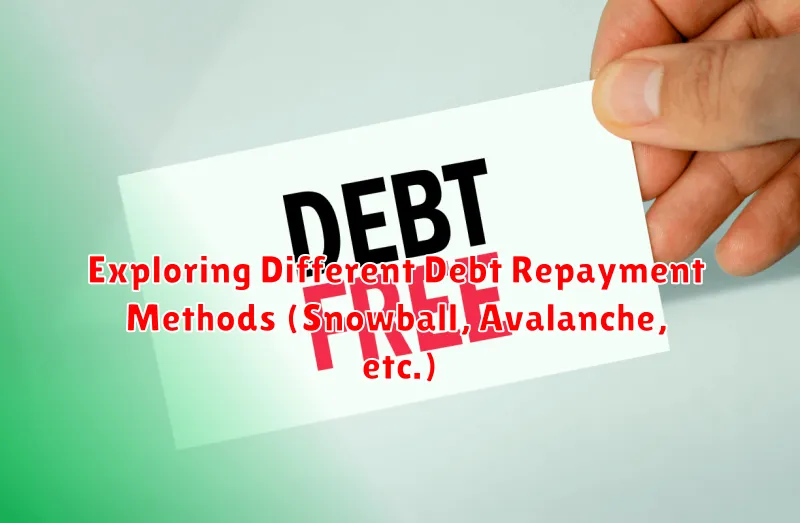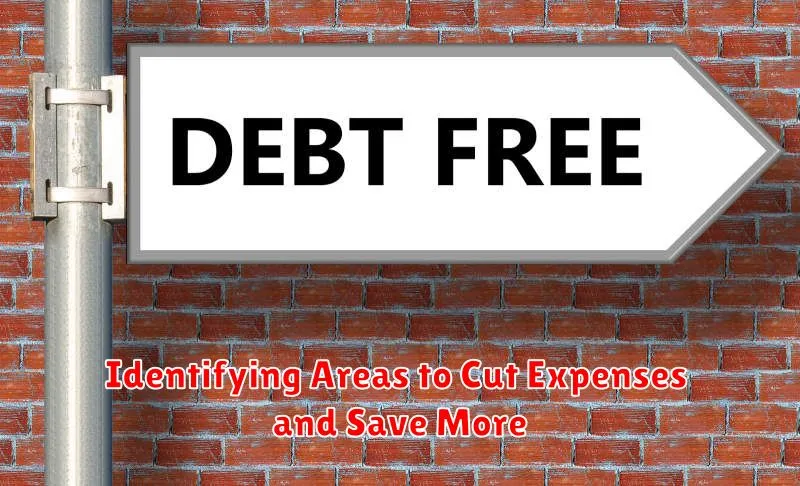Are you drowning in debt? You’re not alone. Many people struggle with debt, but it doesn’t have to control your life. With a little planning and effort, you can create a debt payoff strategy that works for you. This guide will provide you with some smart strategies for paying off debt while also saving money.
We’ll explore effective methods like the snowball method and the avalanche method, helping you prioritize and eliminate debt faster. We’ll also discuss practical tips for budgeting, increasing income, and maximizing savings, so you can take control of your finances and achieve financial freedom.
Understanding Your Current Financial Situation
Before you can start planning for your financial future, you need to understand where you are right now. This means taking a close look at your current financial situation, including your income, expenses, assets, and debts. This process may seem daunting, but it’s essential for making informed decisions about your money.
Here are some steps you can take to get a clear picture of your financial situation:
1. Track Your Income
Start by listing all sources of income, including your salary, wages, investments, and any other regular income streams. You should also consider any potential income sources that might be available to you in the future, such as a raise or a bonus. This will help you determine your total available income.
2. Monitor Your Expenses
Tracking your expenses is equally important. There are several ways to do this, such as using a budgeting app, keeping a spreadsheet, or simply writing down your expenditures. Make sure to categorize your expenses to get a better understanding of where your money is going. This will help you identify areas where you can cut back.
3. Evaluate Your Assets
Assets are anything of value that you own. This includes cash, savings accounts, investments, real estate, vehicles, and even personal belongings. Make a list of all your assets and estimate their current market value. This will give you a picture of your overall wealth.
4. Assess Your Debts
Debts are any outstanding financial obligations you have. This includes credit card debt, student loans, personal loans, mortgages, and any other outstanding bills. List all your debts, including the amount owed, interest rates, and minimum payments. Understanding your debt burden will help you prioritize paying it off.
5. Analyze Your Net Worth
Once you have gathered information about your income, expenses, assets, and debts, you can calculate your net worth. Net worth is simply the difference between your assets and your liabilities. A positive net worth indicates that you have more assets than liabilities, while a negative net worth means you owe more than you own. Your net worth can be a good indicator of your overall financial health.
By taking the time to understand your current financial situation, you can set yourself up for success in achieving your financial goals. This process allows you to identify areas for improvement, prioritize your financial objectives, and make informed decisions about your money. Remember that understanding your financial situation is an ongoing process. It’s essential to regularly review and update your financial information to ensure it remains accurate and reflects your current circumstances.
Creating a Realistic Budget That Works for You
Managing your finances can feel overwhelming, but creating a realistic budget is the key to achieving your financial goals. A budget helps you track your income and expenses, making it easier to save money, reduce debt, and plan for the future. However, many people struggle with creating and sticking to a budget. That’s because most budgets are too restrictive and unrealistic, leading to frustration and failure. So how do you create a budget that actually works for you?
1. Track Your Spending
The first step is to understand where your money is going. For at least a month, track all your expenses, both big and small. You can use a budgeting app, a spreadsheet, or even a notebook. Be honest and thorough, and don’t forget about those small, daily purchases that can add up quickly.
2. Categorize Your Expenses
Once you have a record of your spending, categorize each expense. This will help you identify areas where you can potentially cut back. Common categories include:
- Housing
- Food
- Transportation
- Utilities
- Entertainment
- Personal care
- Debt payments
- Savings
3. Set Realistic Goals
When setting your budget, it’s important to be realistic about your goals. Avoid cutting back too drastically or setting goals that are impossible to achieve. Instead, focus on making small, sustainable changes to your spending habits. For example, instead of eliminating eating out completely, try reducing it by one meal per week.
4. Allocate Your Income
After analyzing your spending, you can allocate your income to different categories. Prioritize your needs, such as housing and essential expenses. Then allocate funds for your goals, such as saving for retirement, paying off debt, or a down payment on a house. It’s crucial to include some wiggle room in your budget for unexpected expenses or emergencies.
5. Review and Adjust
A budget isn’t set in stone. Review it regularly and make adjustments as needed. Your income and expenses may change over time, so it’s essential to stay flexible and adapt your budget accordingly. Celebrate your successes and don’t get discouraged by occasional slip-ups.
6. Seek Professional Guidance
If you’re struggling to create or stick to a budget, don’t be afraid to seek professional guidance. A financial advisor can help you develop a personalized budget that meets your specific needs and goals.
Creating a realistic budget is a journey, not a destination. It takes time and effort to develop healthy financial habits. Be patient with yourself, stay focused, and remember that you’re in control of your finances. With a well-planned and flexible budget, you can achieve your financial goals and secure a brighter future.
Exploring Different Debt Repayment Methods (Snowball, Avalanche, etc.)

Having debt can be a stressful experience, but understanding your options and developing a solid repayment plan can help you gain control of your finances and work towards a debt-free future. Two popular methods for tackling debt are the snowball method and the avalanche method, each with its own advantages and disadvantages. Let’s explore these methods and see which one might be right for you.
The Snowball Method
The snowball method prioritizes paying off the smallest debts first, regardless of interest rates. This approach is often more psychologically rewarding, as you see progress quickly and gain momentum.
- How it works:
- List all your debts from smallest to largest balance.
- Make minimum payments on all debts except the smallest one.
- Make the largest possible payment on the smallest debt.
- Once the smallest debt is paid off, roll that payment amount into the next smallest debt.
- Continue this process until all debts are paid off.
Pros:
- Provides a sense of accomplishment and motivation.
- Helps you build momentum and get into the habit of paying off debt.
Cons:
- You may end up paying more in interest over time, as you prioritize smaller debts with potentially higher interest rates.
- It can be less efficient financially.
The Avalanche Method
The avalanche method, on the other hand, focuses on paying off the debt with the highest interest rate first. This approach aims to save you the most money in interest charges over time.
- How it works:
- List all your debts from highest to lowest interest rate.
- Make minimum payments on all debts except the one with the highest interest rate.
- Make the largest possible payment on the debt with the highest interest rate.
- Once that debt is paid off, roll that payment amount into the next debt with the highest interest rate.
- Continue this process until all debts are paid off.
Pros:
- Saves you the most money in interest charges.
- More efficient financially in the long run.
Cons:
- Can be less motivating at the start, as you might not see as much progress initially.
- May feel overwhelming initially, especially if you have a large debt with a high interest rate.
Which Method is Right for You?
Ultimately, the best debt repayment method for you depends on your individual financial situation and personality. Consider these factors:
- Your debt amounts and interest rates: If you have a few debts with very high interest rates, the avalanche method may save you more money in the long run.
- Your motivation and discipline: If you need the psychological boost of seeing progress quickly, the snowball method might be more motivating for you.
- Your financial goals: If you are aiming to save money and pay off debt as quickly as possible, the avalanche method is generally more efficient.
Don’t be afraid to experiment and find what works best for you. You can even combine elements of both methods. The key is to choose a strategy that you are comfortable with and can stick to. Remember to track your progress, celebrate milestones, and stay focused on your financial goals.
Identifying Areas to Cut Expenses and Save More

Saving money can feel like an uphill battle, especially in today’s economy. But the good news is that even small changes in your spending habits can add up to significant savings over time. The key is to identify areas where you can cut expenses without sacrificing your quality of life.
Start by taking a close look at your current spending habits. Track your expenses for a month or two using a budgeting app or a simple spreadsheet. This will give you a clear picture of where your money is going. Once you have this information, you can start to identify areas where you can cut back.
Here are some common areas where people can often find ways to save:
- Housing: This is often the biggest expense for most people. Can you downsize your home, move to a less expensive neighborhood, or find ways to reduce your utility bills?
- Transportation: Consider using public transportation, biking, or walking instead of driving. You could also look into carpooling or selling your car if you don’t need it for daily commutes.
- Food: Eating out less frequently and cooking more meals at home can save you a lot of money. You can also save by shopping for groceries more strategically and avoiding impulse buys.
- Entertainment: There are plenty of free or low-cost ways to entertain yourself. Explore local parks, museums, and libraries, or host game nights with friends.
- Subscriptions: Take a look at all your monthly subscriptions, such as streaming services, gym memberships, and magazine subscriptions. Are you really using all of them? Canceling unused subscriptions can save you money.
- Shopping: Shop around for better deals on everything from clothes and electronics to groceries and household supplies. Look for discounts, coupons, and sales.
It’s also important to look for ways to increase your income. This could involve taking on a side hustle, selling unwanted items, or negotiating a raise at your current job.
Saving money takes effort and discipline, but it’s definitely worth it. By making small changes to your spending habits and exploring ways to increase your income, you can build a more secure financial future for yourself and your family.
Finding Additional Income Sources to Boost Your Payments
Finding extra income sources can help you manage your finances better and reach your goals faster. Whether you need to pay off debt, save for a down payment, or simply want to increase your savings, having additional income can make a significant difference.
Here are some ways to find additional income sources:
1. Leverage Your Skills and Hobbies
Do you have any skills or hobbies that you could turn into a source of income? For example, if you’re good at baking, you could sell your baked goods at local farmers markets or online. If you’re a skilled writer, you could offer freelance writing services. Explore your interests and see if there’s a way to monetize them.
2. Take on Part-Time or Gig Work
There are many opportunities for part-time or gig work available, both online and offline. You could become a delivery driver, a tutor, or a virtual assistant. Many online platforms connect workers with short-term or project-based jobs.
3. Sell Unwanted Possessions
Do you have any clothes, furniture, electronics, or other items that you no longer need or use? You can sell them online through marketplaces like eBay, Craigslist, or Facebook Marketplace. You could also host a garage sale or donate items to charity and receive a tax deduction.
4. Rent Out Spare Space
If you have a spare room, basement, or parking space, you can rent it out to generate extra income. Short-term rental platforms like Airbnb and VRBO make it easy to list and manage rentals.
5. Participate in Research Studies
Many companies and research institutions conduct paid studies to gather data and insights. You can sign up with online platforms that connect participants with research studies, which can earn you money for your time and opinions.
6. Become a Tutor or Mentor
If you’re skilled in a particular subject, you can offer tutoring or mentoring services to students or professionals. This can be done online or in person, and it’s a great way to share your knowledge while earning extra income.
7. Offer Pet Care Services
Pet owners often need help with pet sitting, dog walking, or grooming. If you love animals, you can offer these services and earn money while providing companionship and care to furry friends.
8. Start a Blog or YouTube Channel
If you have a passion or expertise, you can share it with the world through a blog or YouTube channel. By building a following and creating valuable content, you can monetize your platform through advertising, sponsorships, or affiliate marketing.
Remember, finding extra income sources requires effort and planning. But with a little creativity and persistence, you can achieve your financial goals and create a brighter future for yourself.
Negotiating with Creditors for Better Terms or Consolidation Options
Being in debt can be a stressful experience. However, you are not alone. Many people find themselves in debt due to various reasons, such as medical bills, unexpected expenses, or job loss. While it may seem overwhelming, there are steps you can take to manage your debt and potentially negotiate with creditors for better terms or consolidation options.
Understanding Your Options
Before you begin negotiating, it’s crucial to understand your options. There are different strategies you can consider:
- Negotiate lower interest rates: Contacting your creditors and requesting a lower interest rate can significantly reduce your monthly payments and overall interest charges. Be prepared to provide reasons for your request and be polite and persistent.
- Extend your payment term: If you’re struggling to make your monthly payments, extending the repayment term can lower your monthly obligations. This, however, can lead to paying more interest over time.
- Consolidate your debt: Debt consolidation involves combining multiple debts into a single loan with potentially lower interest rates and a fixed monthly payment. You can consider a balance transfer credit card, a personal loan, or a debt consolidation loan.
- Debt settlement: This involves negotiating with creditors to accept a lump sum payment, often significantly lower than your total outstanding debt. However, this can negatively impact your credit score and may not be suitable for everyone.
Preparing for Negotiation
Before reaching out to your creditors, take the following steps:
- Review your credit report: Identify all your debts, interest rates, and minimum payments.
- Create a budget: Determine how much you can realistically afford to pay each month.
- Gather documentation: Compile your financial records, including pay stubs, bank statements, and tax returns, to support your request.
Negotiating with Creditors
When negotiating with your creditors, keep the following tips in mind:
- Be polite and professional: Treat your creditors with respect, even if you’re frustrated. A positive approach can make a difference.
- Explain your situation: Honestly explain your financial situation and how you’re struggling to make payments. Provide supporting documentation if necessary.
- Propose a solution: Offer a specific solution that you believe will benefit both you and the creditor. For example, propose a lower interest rate, a longer payment term, or a lump sum payment if possible.
- Negotiate in writing: Get any agreement in writing to avoid any misunderstandings or disputes in the future.
Consider Professional Help
If you’re overwhelmed by debt and finding it challenging to negotiate with creditors, consider seeking professional help from a credit counselor or a debt consolidation company. These professionals can provide guidance and support, assist in negotiating with creditors, and potentially develop a personalized debt management plan.
Remember, managing debt requires time and effort. By taking proactive steps, understanding your options, and negotiating with creditors, you can work towards a more manageable financial future.
Staying Motivated and Avoiding Common Debt Traps
Managing finances can be challenging, especially when it comes to staying motivated and avoiding common debt traps. It’s easy to get caught up in the day-to-day grind and lose sight of our financial goals. However, with a proactive approach and a little bit of planning, we can set ourselves up for success.
Setting Realistic Goals
The first step to staying motivated is to set realistic financial goals. Avoid setting goals that are too ambitious or difficult to achieve. Instead, start with smaller, achievable goals that you can build upon over time. For example, instead of aiming to pay off your entire credit card debt in one month, focus on making small, consistent payments each month.
Creating a Budget
A budget is an essential tool for managing your finances. It helps you track your income and expenses, identify areas where you can save money, and stay on track with your financial goals. There are many different budgeting methods, so find one that works best for you. You can use a spreadsheet, budgeting app, or even a simple notebook.
Avoiding Common Debt Traps
There are many common debt traps that people fall into, such as:
- Using credit cards for everyday expenses
- Taking out payday loans
- Carrying a high balance on store credit cards
- Not paying bills on time
To avoid these traps, it’s important to be mindful of your spending habits and make informed decisions about your finances. Consider using cash or debit cards instead of credit cards for everyday expenses. Also, avoid taking out payday loans, which can lead to a cycle of debt.
Seeking Help When Needed
If you’re struggling with debt, don’t be afraid to seek help. There are many resources available, such as credit counseling agencies and debt consolidation programs. These organizations can provide guidance and support as you work to get your finances back on track.
Conclusion
Staying motivated and avoiding common debt traps requires a proactive approach and a commitment to financial responsibility. By setting realistic goals, creating a budget, and making informed decisions about your finances, you can take control of your financial future and achieve your goals.
Building Healthy Financial Habits for Long-Term Success

Financial wellness is crucial for a fulfilling life, allowing you to achieve your goals and navigate life’s unexpected turns with confidence. Building healthy financial habits is not about deprivation; it’s about making mindful choices that align with your values and aspirations. By adopting these practices, you can pave the way for a secure and prosperous future.
1. Track Your Spending
Understanding where your money goes is the first step towards financial control. Use budgeting apps, spreadsheets, or even a simple notebook to track your income and expenses. This provides valuable insights into your spending patterns, helping you identify areas where you can save or cut back.
2. Set Clear Financial Goals
Having specific, measurable, achievable, relevant, and time-bound (SMART) financial goals gives you direction and motivation. Whether it’s buying a home, funding your children’s education, or retiring comfortably, having a clear target in mind helps you stay focused and disciplined.
3. Create a Budget
A budget acts as a roadmap for your finances, guiding your spending and saving decisions. Allocate funds for essential expenses, debt payments, and savings goals. Regularly review and adjust your budget to reflect changes in your income or expenses.
4. Save Regularly
Make saving an automatic habit. Set up regular contributions to savings accounts, even if it’s a small amount. Consider automating transfers from your checking account to your savings account to ensure consistency.
5. Pay Off Debt
High-interest debt can significantly impact your financial well-being. Prioritize paying off debt, especially high-interest credit card debt, by using strategies like the snowball or avalanche method.
6. Invest Wisely
Investing your savings is essential for long-term financial growth. Explore different investment options, such as stocks, bonds, mutual funds, or real estate, based on your risk tolerance and financial goals. Seek professional advice from a financial advisor if needed.
7. Build an Emergency Fund
An emergency fund is crucial for unexpected events like job loss, medical expenses, or car repairs. Aim to have 3-6 months’ worth of living expenses saved in a liquid, easily accessible account.
8. Review and Adjust
Regularly review your financial habits and make adjustments as needed. Your financial situation may change over time, so it’s important to stay adaptable and make necessary modifications to your budget, savings plan, or investment strategy.
9. Seek Financial Education
Continuously educate yourself about personal finance through books, articles, workshops, or online resources. Staying informed empowers you to make informed decisions and navigate the complexities of the financial world.
Building healthy financial habits is a journey, not a destination. It requires patience, persistence, and a commitment to making mindful financial decisions. By embracing these practices, you can set yourself up for long-term financial success and achieve a sense of peace and security in your financial life.
Celebrating Milestones and Adjusting Your Plan as Needed
As you journey through life, it’s important to take the time to celebrate your milestones, no matter how big or small they may seem. These achievements, whether it’s landing a new job, graduating from school, or simply completing a challenging task, are all markers of your progress and serve as reminders of your capabilities.
Celebrating your milestones is more than just a fun way to acknowledge your successes; it’s a crucial step in maintaining motivation and staying focused on your goals. When you take the time to celebrate, you create positive associations with your journey, making it more enjoyable and less daunting. This celebration can be as simple as a small treat or a night out with friends, or it can be something more elaborate, depending on the significance of the milestone.
However, it’s equally important to be flexible and adaptable as you move forward. Life rarely goes according to plan, and there will be times when you need to adjust your course. Unexpected challenges, changes in circumstances, or simply a shift in your priorities may necessitate a reevaluation of your goals and strategies.
Don’t be afraid to make changes to your plan as needed. Adaptability is a sign of strength and intelligence, allowing you to stay on track and make progress even when faced with unforeseen obstacles. Remember, the journey is not always a straight line; it’s often a winding path with unexpected turns. Embrace the flexibility to navigate these turns and continue moving towards your goals.
By celebrating your milestones and adjusting your plan as needed, you set yourself up for a fulfilling and successful journey. Remember, the path to success is paved with both achievements and adjustments, and by embracing both, you unlock your full potential.

